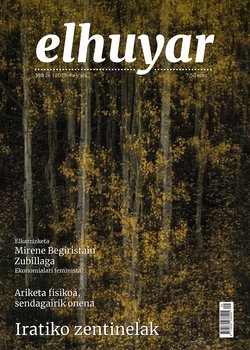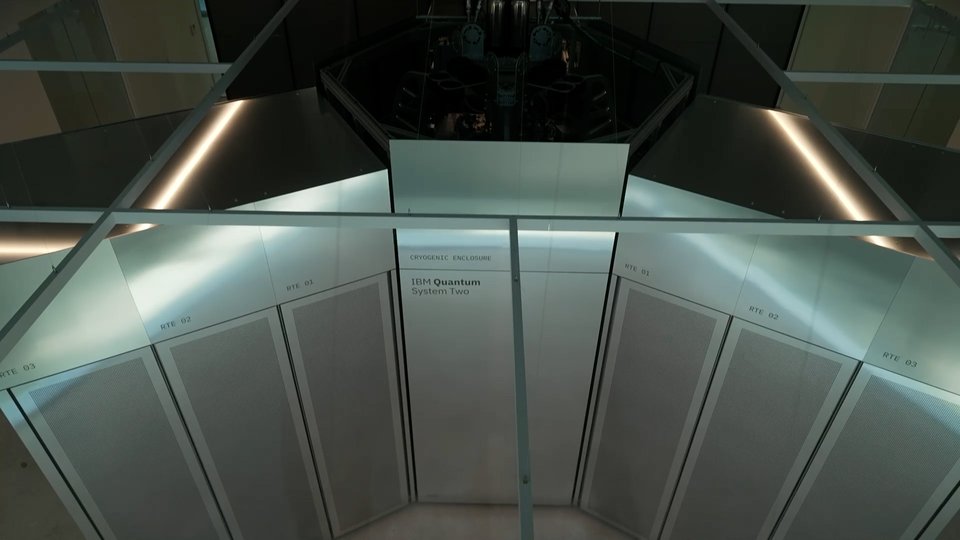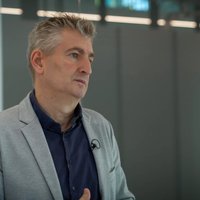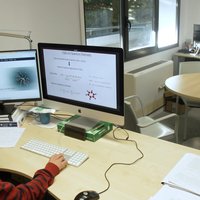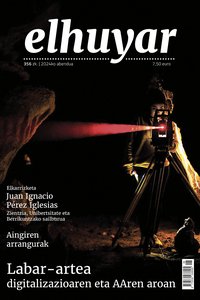Juantxo Lopez de Uralde: "Every day we have a small Prestige in front of our coast"
Juantxo, here we have the black tide. How will it affect living beings and the ecosystem?
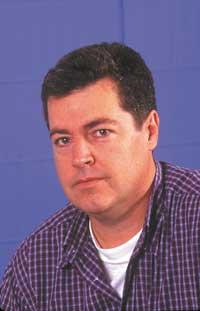
Unfortunately, the Prestige is not the first black tide that occurs, so we know quite well the consequences of the black tides.
When the black tide occurs, the fuel remains on the surface of the sea, being the first physical influence. As we see, birds and marine mammals are the most affected. In the case of the Prestige, experts say that at least 130,000 birds have died, a figure that is increasing day by day.
The fuel then reaches the coast, where the greatest impact occurs. In fact, the coasts are very rich because of their great biodiversity. However, the fuel is placed on beaches and rocks, eliminating living things that inhabit. Although some experts claim that the ecosystem takes ten years to recover, some species will be lost forever.
You mentioned before that they are birds, but what about other species?
It is true that birds are the first to highlight the damage. Over time, however, fuel enters the food chain and that is when all species perceive its effects. First, the fuel stain on the sea surface prevents light from entering, resulting in the loss of phytoplankton. In the next step the zooplankton disappears and the rest of the species are left without food.
In addition, some components of the fuel are highly toxic as polycyclic aromatic hydrocarbons. They slowly leave the fuel and cause mutations in living beings.
Finally, on both levels, all ecosystem species are affected.
Besides the fuel that is on the surface of the sea and reaches the coast, is there more fuel in the sea?
Yes. In fact, once the fuel reaches the beaches, the sea recovers part of that fuel and takes it to the bottom of the sea. There the effect is like asphalt: the seabed is paved. As a result, life on the seabed disappears.
More than one mentions that the Prestige disaster should reflect on the maritime transport of products such as fuel...
Remember that only 12% of the oil that is poured into the sea is tide
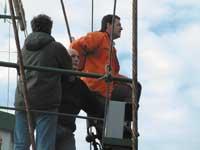
as a result of blacks, the rest is poured into regular activities. Considering that before Finisterre 1,400 oil tankers pass a year and that in the Gulf of Bizkaia there are also similar quantities, every day we have a small Prestige off our coast.
In addition, oil transport is becoming cheaper than before. To reduce costs, oil companies do not care about endangering the environment, as demonstrated by flags of convenience, liability agreements and all these things. All to make transportation more economical.
Now it seems that the measures worsen. Will it work for something?
After the Prestige there has been a lot of talk in the media, but the European Union has not done anything yet. Erika and the Prestige have only ordered that the type of fuel they carried be carried on board double-hull vessels. However, this type of fuel represents only 7% of the total transported, while other oil products continue to be transported on old ships.
Fuel is a by-product produced in refineries. The one carrying the Prestige came from the Baltic. What about the fuel that forms in the refineries here?
The Prestige fuel came from the Baltic and was headed to Gibraltar to be used as fuel by other ships. The refineries here take the crude, where a treatment is carried out, from where different types of gasoline and other products come out, including fuel. But we don't know exactly what happens to that fuel. We have asked the governments of the CAPV, Cantabria and Asturias, and we are still waiting for an answer.
The transport of fuel is structural; as we need fuel, there is no choice but to bring it. Or yes?
Nobody addresses this issue, but there are other options. The question of Prestige has revealed the dependence of our society on oil. However, in order to never be real, we have to get out of there and for this we believe that we have to resort to renewable energies. Here are wind, solar and systems that do not need fossil or nuclear fuels.
At this point, however, priority must be given to the fuel that is coming to the coast. What can be done to minimize damage? Can the fuel be cleaned?
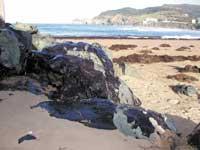
Of course there are ways. The damage is done, but now we have to try to minimize the consequences. There are physical and chemical methods of fuel cleaning. The methods that are now being used are physical: it consists in taking the fuel out of the beaches and rocks, and there is no more. Others, chemical methods, can cause more damage than oil, so we are totally against the use of chemicals.
In any case, the priority is to collect as many fuel as possible at sea. As mentioned above, the coast is very rich and we must prevent the fuel from reaching it. To do this, everything is being done, fishing boats leave daily to the sea and collect all the oil they can. There are more advanced and adequate methods, and we believe that the Government should be prepared on our shores just in case. But since we don't have it, people are doing everything possible. We believe that from now on we should have more prepared boats to fight harder.
Birds, previously damaged During the week of the interview, the Provincial Council of Gipuzkoa provided until 5 February 2003 data on birds collected in Gipuzkoa. A total of 766 birds, 492 dead and 279 alive were collected. Most (70% of the birds collected) belonged to the species Uria aalge, the alca or the common martin. In fact, 321 dead and 274 alive were collected. By February 6, of the 274 birds of 13 living species, only 34 were alive, all of them of the species Uria aalge. And the data is even worse in the rest of the Basque Country: In Lapurdi more birds were received than in Gipuzkoa and Bizkaia more than 2,000. By 7 February, according to SEO/BirdLife and the Provincial Councils of Bizkaia and Gipuzkoa, more than 18,000 birds were collected dead in the states of Portugal, France and Spain. On the other hand, experts estimate that collected birds account for 10-20% of total deaths. |
Buletina
Bidali zure helbide elektronikoa eta jaso asteroko buletina zure sarrera-ontzian


